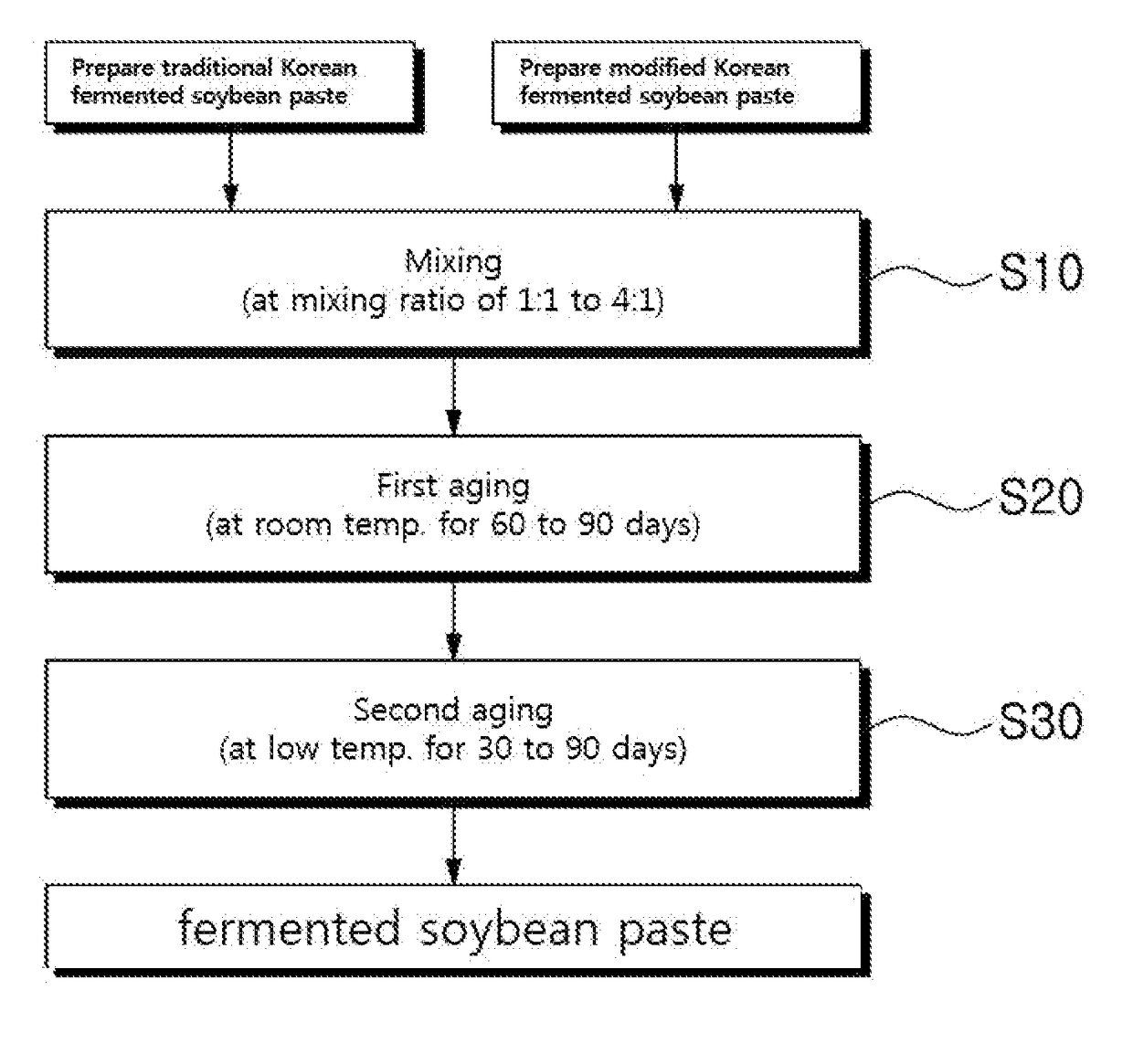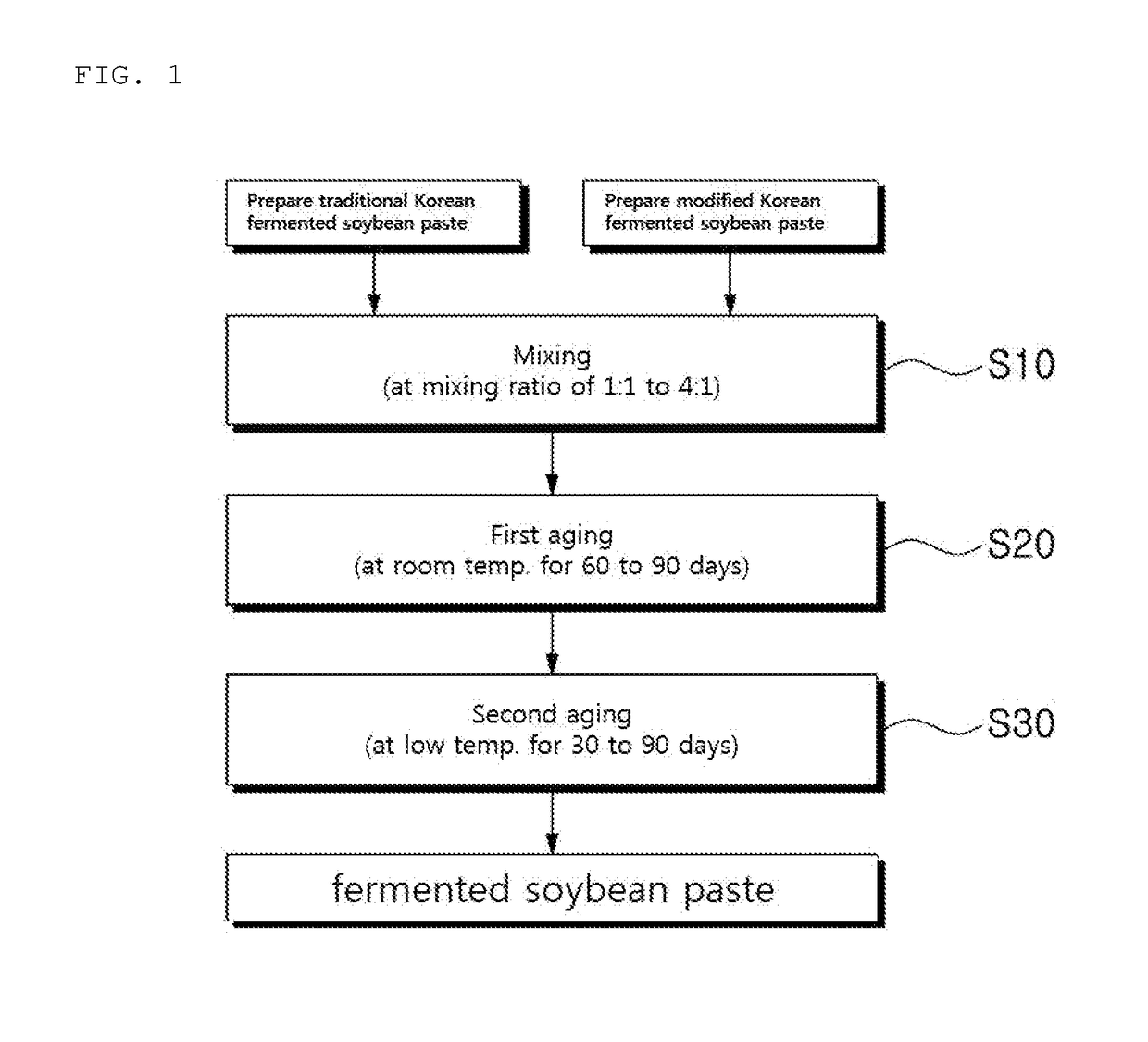Method for preparing fermented soybean paste and fermented soybean paste prepared thereby
a technology of fermented soybean and soybean paste, which is applied in the field of preparing a fermented soybean paste, can solve the problems of deteriorating the whole taste quality of fermented soybean paste, stale taste and unpleasant smell, and insufficient production of traditional korean fermented soybean paste in large quantities, and achieves high enzymatic activity, deep savory taste, and high enzymatic activity
- Summary
- Abstract
- Description
- Claims
- Application Information
AI Technical Summary
Benefits of technology
Problems solved by technology
Method used
Image
Examples
examples
[0027]
[0028]The preparation procedures for a Traditional Korean fermented soybean paste were performed as follows.
[0029]Selected soybeans were washed, steamed and cooled down to 20 to 50° C. The cooled soybeans were crushed and shaped into a rectangular block to prepare a Korean-style meju. Then, a fermentation starter, Aspergillus oryzae, available by a known method was added in an amount of 0.1 to 1.0 wt. % with respect to the weight of grains. The soybeans as used herein may include at least one selected from the group consisting of soybean, subaktae, yutae, jinjoori, cheongtae, black bean, huktae, seoritae, yellow bean, kidney bean, dongbu, pea, horse bean, broad bean, and black soybean. The Korean-style meju was fermented at 10 to 40° C. for 1 to 3 months, soaked in brine having a salinity of 18 to 25% and a weight 1.8 to 2.5 times the weight of the meju for 10 to 50 days, and then separated from the brine to produce a Korean fermented soybean paste.
[0030]The preparation proced...
experimental example 3
Fermented Soybean Paste of Example 5 and Korean Fermented Soybean Paste
[0046]A sensory evaluation on the fermented soybean paste of Example 5 was performed in order to determine the difference in the sensory properties between the fermented soybean paste of the present disclosure and the Korean fermented soybean paste.
[0047]81 female homemakers 30 to 49 years old living in the Seoul / Kyeonggi-do districts participated in the experiment; that is, they cooked a soybean (doenjang) soup and a soybean (doenjang) stew with a portion of the same soybean paste and a same recipe and tasted them for sensory evaluation. The taste quality and the sensory profile were evaluated. In the evaluation, the individual soybean pastes were scored on a five-point scale in terms of the representative taste properties and emotional / image qualities of doenjang. The evaluation results are presented in Table 3.
TABLE 3Sensory Evaluation on Fermented soybean paste of Example 5and Korean Fermented soybean pasteKo...
PUM
 Login to View More
Login to View More Abstract
Description
Claims
Application Information
 Login to View More
Login to View More - R&D
- Intellectual Property
- Life Sciences
- Materials
- Tech Scout
- Unparalleled Data Quality
- Higher Quality Content
- 60% Fewer Hallucinations
Browse by: Latest US Patents, China's latest patents, Technical Efficacy Thesaurus, Application Domain, Technology Topic, Popular Technical Reports.
© 2025 PatSnap. All rights reserved.Legal|Privacy policy|Modern Slavery Act Transparency Statement|Sitemap|About US| Contact US: help@patsnap.com


